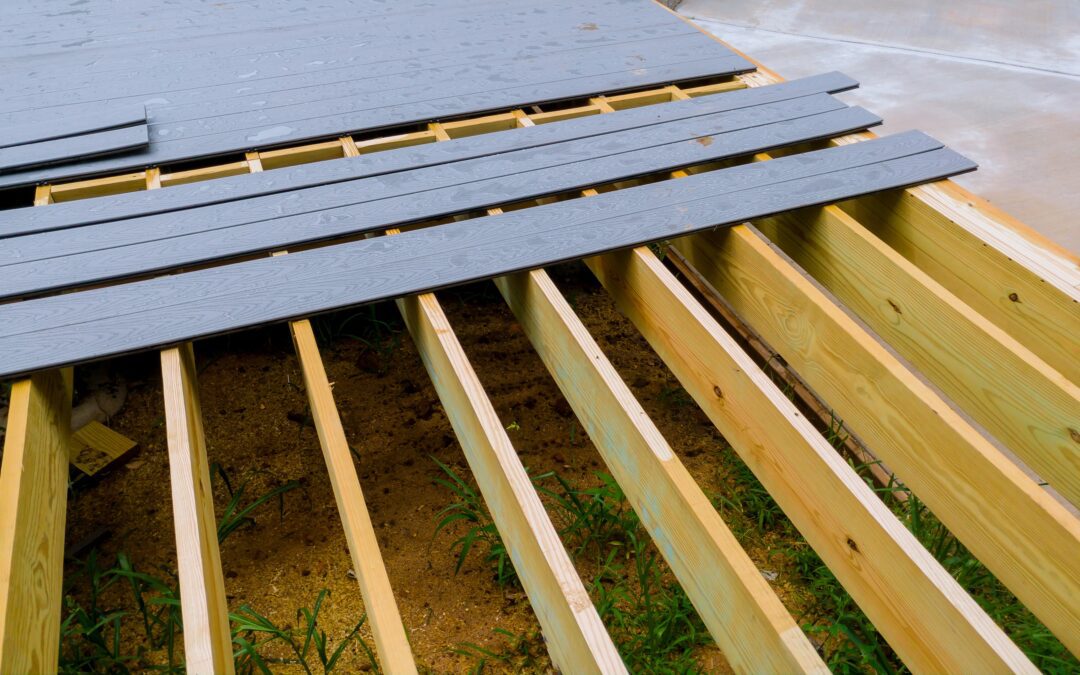Many homes in the Lower Mainland are built on sloped lots. That means a flat backyard is not always an option. If your yard has a slope, you might think a deck is off the table or too complicated to build. The truth is, a sloped yard offers some of the best opportunities for creative, functional, and visually impressive outdoor spaces.
Building on a slope is different than working on flat ground, but with the right approach, it can lead to a better final result. Here is what you need to know if you are planning a deck on uneven terrain.
Why Sloped Yards Need a Different Strategy
A sloped site affects how the deck is supported, how it connects to your home, and what options are available for layout and access. Safety, stability, and drainage all become more important when elevation changes are involved.
Unlike flat yards, where footings are placed at the same height, sloped decks often require custom footing depths, longer posts, and engineered framing. It takes more planning and more precision, but it can be done with great results.
Common Challenges with Sloped Builds
Uneven Ground
Footings need to reach stable soil. On a slope, that means the depth of each footing may vary significantly. One side of the deck might be close to the ground while the other is several feet in the air.
Water Drainage
Slopes naturally collect and channel water. Without proper grading and drainage planning, water can pool under the deck or around footings, causing erosion or damage over time.
Access and Stairs
A sloped yard often requires stairs or tiered levels to connect the deck to the lawn or other outdoor spaces. These stairs must be built to code and placed where they make sense for daily use.
Views and Privacy
The height of the deck can affect how much of the yard is visible. In some cases, a higher deck gives you a great view. In others, it may make privacy more difficult unless features like screens or landscaping are added.
Key Benefits of Building on a Slope
Although it may take more work, building on a slope has some major advantages.
Maximizes Usable Space
Flat ground is limited. A well-designed deck on a slope allows you to create level outdoor space where there was none before. This gives you more room to entertain, relax, and enjoy your yard.
Creates a Focal Point
Elevated decks often become a central feature in the landscape. With the right design, the deck will stand out in a good way and increase the appeal and value of your home.
Offers Design Flexibility
You can build a single-level deck, a multi-level platform, or even a combination of stairs, landings, and open areas. Slopes give you more creative design options than flat yards in many cases.
Design Options for Sloped Decks
Ground-Level on One End, Raised on the Other
This is the most common approach. The deck is attached to the back of the house and extends over the slope, supported by posts and footings of varying height. Railings are usually required on the elevated side for safety.
Freestanding Deck with Stairs
In cases where attaching to the house is not ideal, a freestanding deck can be built anywhere in the yard. Stairs can lead from the deck to the home or to different yard levels.
Multi-Level Decks
This approach breaks the space into sections, each on a different level and connected by stairs or walkways. It works well for steeper slopes and can include separate zones for dining, seating, or gardening.
Deck and Retaining Wall Combo
Sometimes the best solution is to build a low deck in combination with a retaining wall. This helps control soil movement and gives the yard a cleaner, more finished look.
Engineering and Permitting
Decks on slopes often require more detailed planning and sometimes need structural engineering, especially if they exceed certain heights or support loads like hot tubs or roof covers.
In British Columbia, most municipalities require a building permit for raised decks. This is especially true if your deck is more than two feet off the ground, has guardrails, or will be connected to your home.
At All Hands on Deck, we handle all permit applications and work with any required engineers to make sure your project meets code and is built to last.
Building to Last on a Slope
Slope decks need to be strong. That means
- Footings placed on solid ground
- Posts properly anchored and reinforced
- Beams sized for the span and load
- Railings securely fastened
- Drainage managed to avoid water problems
We only use materials and methods that hold up to both the demands of elevation and the damp Lower Mainland climate. Safety is always the priority, especially when the deck is raised above the ground.
What to Expect from the Build Process
Initial Site Visit
We visit your home to evaluate the slope, take measurements, and talk through options.
Custom Design
We draw up a plan that fits your yard, your goals, and your budget. You choose the materials and style.
Permits and Engineering
We submit plans and handle approvals. If an engineer is needed, we coordinate that too.
Construction
We build the deck from the ground up. Our team works efficiently, keeps the site clean, and communicates throughout.
Final Walkthrough
Once the job is done, we walk the space with you to make sure everything looks and feels right.
Pricing Considerations
Decks on sloped lots can cost more than similar decks on flat ground due to
- More complex footing and framing
- Extra materials for posts and stairs
- Additional labor for site access and elevation management
- Possible engineering or permit fees
However, these costs often lead to a much more usable and valuable backyard. Most clients feel the investment is well worth it once they see the finished product.
Have a sloped yard and want to turn it into a great outdoor space? Contact All Hands on Deck to schedule a visit and get expert advice on how to build your deck the right way.



Recent Comments